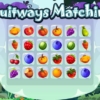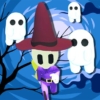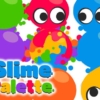Description
Description: The color wheel is a visual representation of colors arranged according to their chromatic relationship. It serves as a fundamental tool in art, design, and fashion to understand color theory and create visually appealing color combinations. The wheel typically includes primary colors (red, yellow, blue), secondary colors (orange, green, purple), and tertiary colors, which are combinations of primary and secondary colors (like yellow-green or blue-violet). By organizing colors in a circular layout, the color wheel helps identify complementary, analogous, triadic, and split-complementary color schemes, all of which are useful in creating harmony and contrast in visual design.
Key Concepts:
- Primary Colors: These are the base colors—red, blue, and yellow—that cannot be created by mixing other colors. They are the foundation of all other colors on the wheel.
- Secondary Colors: Made by mixing two primary colors, they include green (blue + yellow), orange (red + yellow), and purple (red + blue).
- Tertiary Colors: These are created by mixing a primary color with a neighboring secondary color, resulting in shades like red-orange, blue-green, and yellow-green.
- Complementary Colors: Located directly opposite each other on the wheel (e.g., red and green, blue and orange), complementary colors create strong contrast and vibrant energy when paired together.
- Analogous Colors: Found next to each other on the wheel (e.g., blue, blue-green, and green), analogous colors offer a harmonious look, often seen in nature. They work well together for calm, unified designs.
- Triadic Colors: A triadic color scheme uses three colors evenly spaced around the wheel, like red, yellow, and blue, creating a balanced and vibrant combination with good contrast.
- Split-Complementary Colors: This scheme involves one base color and the two colors adjacent to its complementary color. It maintains the contrast of complementary colors but with a softer feel.
- Warm and Cool Colors: The wheel is divided into warm (reds, oranges, yellows) and cool colors (blues, greens, purples), with warm colors often associated with energy and cool colors with calm.
The color wheel is an essential guide for artists, designers, and anyone working with color, enabling them to create visually balanced and appealing compositions by understanding how colors interact.
Instructions
mouse/touchscreen







